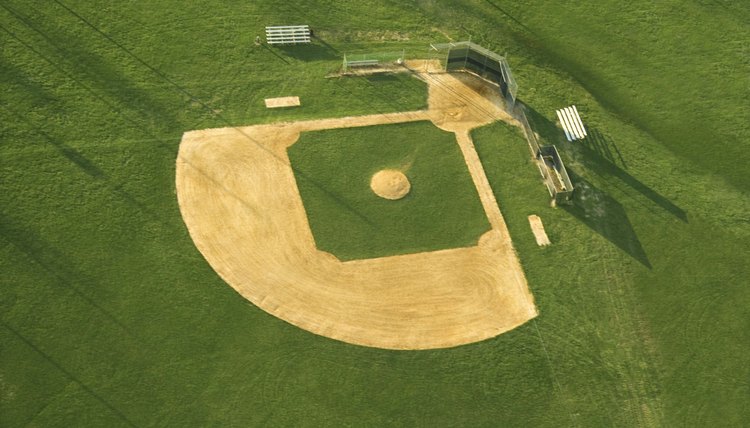Difference Between College and High School Baseball Fields

The amount of skill displayed between the high school and college levels of baseball may be vastly different, but the field on which the sport is played has few differences.
- Consistency in the field size and layout helps prepare young baseball players if they decide to transition from high school to college athletics.
- Additionally, it standardizes the sport so a baseball field can be used for different levels of the game.
Consistent layout and field size helps prepare young baseball players to transition from high school to college athletics.
What is the difference in outfield distance?
One of the main differences between high school and college baseball is the distance from home plate to the outfield wall.
- The National Federation of State High School Associations, or NFHS, suggests that the nearest point of the outfield wall or fence should be at least 300 feet from home plate within fair territory, and the center line to the outfield wall be at least 350 feet.
- At the university level, the National Collegiate Athletic Association, or NCAA, dictates that these figures should be raised to 330 feet and 400 feet, respectively.
What is the difference in outfield fence?
Unlike the NFHS, the NCAA highly recommends that college baseball fields have an outfield fence that is “solid and secure.”
- The NCAA recommends that permanent fences be at least 6 feet tall, but 8 feet is the preferred height.
- The NCAA discourages wooden fences made from 1-by 4-inch boards and nylon fences because they are considered unsafe and insecure.
What is the difference in warning track?
The NCAA recommends that teams play on a field with a warning track present in front of the outfield fence, dugouts and backstop. The warning track must be a minimum of 15 feet wide in each of these areas and should be constructed of a different material than the fair-play area.
The NFHS does not require or recommend a warning track in its rules, as of 2022.
What is the difference in infield distances
The infield measurements on a high school and college baseball field are the same.
- The distance between home plate and first base is 90 feet.
- It is about 127 feet from home to second base and 90 feet from home plate to third. The distance from the pitcher’s mound to home plate is 60 1/2 feet.
- The distance from home plate to the backstop is 60 feet, and the grass line of the infield must extend in a 95-foot arc from the front of the pitcher’s mound.
The only difference between the NFHS and the NCAA when it comes to the infield is that the coaches of two opposing teams can mutually agree to play on a non-regulation facility under the NFHS rules.
References
Writer Bio
Writing professionally since 2005, Ryan Haas specializes in sports, politics and music. His work has appeared in "The Journal-Standard," SKNVibes and trackalerts. Haas holds a Bachelor of Arts in English and creative writing from the University of Illinois.
